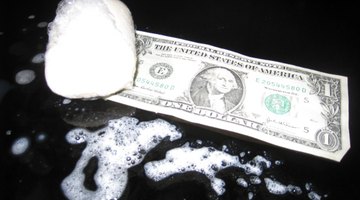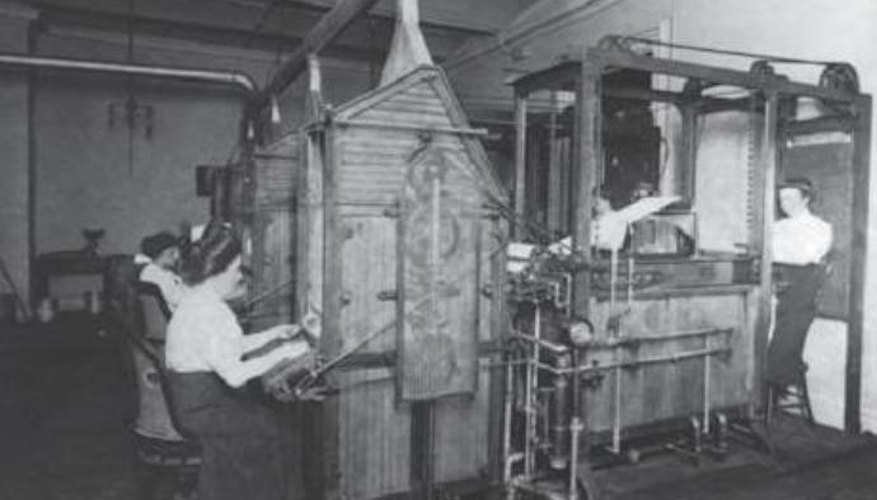Money-laundering sounds like an easy way to end up in jail, but what do you do when you have a bunch of grimy bank notes? Before you start cleaning, consider the options. If the paper currency is more than 50 years old, it is best to leave it be, as the material has aged too much to be cleaned in most manners. It is still worth a lot to collectors.
- Money-laundering sounds like an easy way to end up in jail, but what do you do when you have a bunch of grimy bank notes?
- If the paper currency is more than 50 years old, it is best to leave it be, as the material has aged too much to be cleaned in most manners.
If you simply wish to clean the currency enough to use it again as tender, perhaps you should go to your local bank.
Most banks will provide a crisp bank note of equal value. The U.S. Bureau of Engraving and Printing states that bank notes can be exchanged for face value if more than 50 per cent of an identifiable note is present and the supporting evidence demonstrates to the satisfaction of the Treasury that the missing portions have been totally destroyed. In short, don't go ripping those dollar bills in half thinking you can get a 2-for-1 deal. Note that paper money is not actually paper.
U.S. bank notes consist of 75 per cent cotton and 25 per cent linen, so you are actually washing fabric. There are also red and blue threads distributed throughout that keep the currency together, meaning it is manufactured to withstand wear and tear, not to look pretty.

Fill bowl with warm water, adding a small amount of dish detergent to create a soapy mixture.
Place paper money on a clean, flat surface. Lightly dip a corner of the soft rag in the soapy water and, starting from the middle of the money, brush it laterally toward the edges. Brush past the edges of the paper money to avoid tearing the corners. Do this for roughly three minutes.
- U.S. bank notes consist of 75 per cent cotton and 25 per cent linen, so you are actually washing fabric.
- Brush past the edges of the paper money to avoid tearing the corners.
Brush the money gently in a circular motion with a slightly moistened soft rag or Q-tip. Again, be careful around the edges. Do this for roughly two minutes. Most paper bills have series of red and blue threads distributed in them that make cleaning harder than on regular paper or fabric.
- Brush the money gently in a circular motion with a slightly moistened soft rag or Q-tip.
Turn the money over and repeat steps 1 through 3.
Once your money is washed, use a dry, soft rag to wipe any excess soap or water away. Lightly pat down the paper money until it is fairly dry. If the paper money is brittle, use a Q-tip around the edges.
Place the paper currency in the middle of a thick book, making sure that the entire bill is within the pages. As long as you don't mind a slightly damp text for a brief period of time, this will dry the money quickly and flatten it. Leave the paper money in the book for at least five hours. Do not try to iron the money; ironing may cause further damage and weaken the integrity of the material.
If you need the money dried faster, use a hair dryer on the low heat setting. Too much heat can cause the fabric to become brittle.
TIP
If you simply want to clean your money and don't care about keeping it perfectly intact, place your paper money in the pockets of some jeans and put them in the washing machine. This will remove any surface dirt easily. If you wish to redeem your damaged money, you may be able to exchange your paper money at any local bank or send it to the Bureau of Engraving and Printing: MCD/OFM, BEPA Room 344A P.O. Box 37048 Washington, D.C. 20013 When sending damaged money, a letter should be included stating the estimated value of the currency and details of how the currency became damaged. The Bureau recommends the following when packing mutilated currency: 1. Do not disturb the fragments any more than is absolutely necessary. 2. If the currency is brittle or inclined to fall apart, pack it carefully in plastic and cotton without disturbing the fragments and place the package in a secure container. 3. If the currency was mutilated in a purse, box, or other container, it should be left in the container to protect the fragments from further damage. 4. If it is absolutely necessary to remove the fragments from the container, send the container along with the currency and any other contents that may have currency fragments attached. 5. If the currency was flat when mutilated, do not roll or fold the notes. 6. If the currency was in a roll when mutilated, do not attempt to unroll or straighten it out.
WARNING
The key word is brush, not scrub. Scrubbing with any excess force will remove ink and/or fray the fabric of the money. This process will not restore dirty money to its original form. This process will clean excess dirt or stains from paper currency less than 50 years old. If the paper money in question is more than 50 years old, do not try to wash it.
